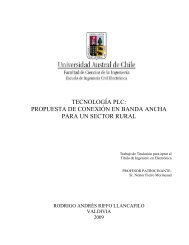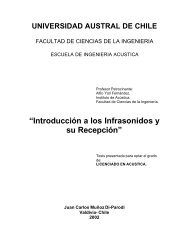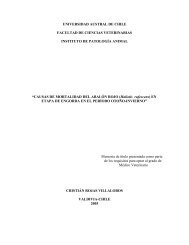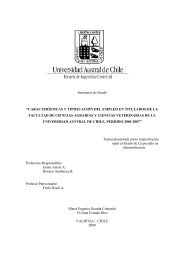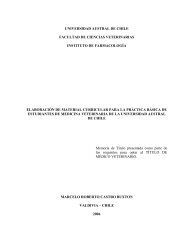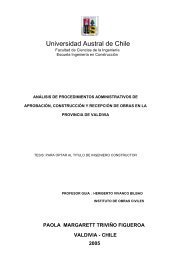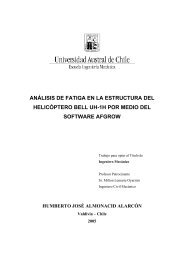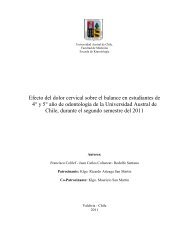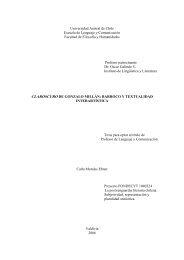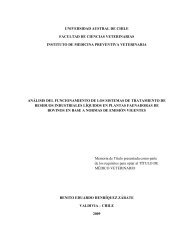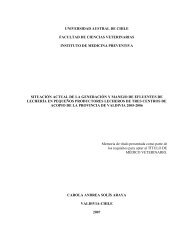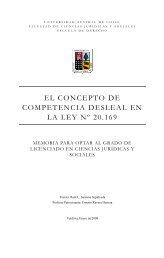sistema show control - Tesis Electrónicas UACh - Universidad ...
sistema show control - Tesis Electrónicas UACh - Universidad ...
sistema show control - Tesis Electrónicas UACh - Universidad ...
You also want an ePaper? Increase the reach of your titles
YUMPU automatically turns print PDFs into web optimized ePapers that Google loves.
NOTE: This version is not the latest one, though it is not incorrect. Version 1.1 is the current<br />
one and can be obtained directly from the MMA.<br />
MIDI SHOW CONTROL (MSC) 1.0<br />
MIDI 1.0 Recommended Practice RP-002<br />
1991-07-25<br />
MIDI Manufacturers Association<br />
POB 3173<br />
La Habra, CA 90632-3173 USA<br />
+1-310/947-8689<br />
fax: +1-310/947-4569<br />
MMA@world.std.com<br />
1. INTRODUCTION<br />
The purpose of MIDI Show Control is to allow MIDI systems to communicate with and to<br />
<strong>control</strong> dedicated intelligent <strong>control</strong> equipment in theatrical, live performance, multi-media,<br />
audio-visual and similar environments.<br />
Applications may range from a simple interface through which a single lighting <strong>control</strong>ler can be<br />
instructed to GO, STOP or RESUME, to complex communications with large, timed and<br />
synchronized systems utilizing many <strong>control</strong>lers of all types of performance technology.<br />
The set of commands is modeled on the command structure of currently existing computer<br />
memory lighting, sound and <strong>show</strong> <strong>control</strong> systems. The intent is that translation between the<br />
MIDI Show Control specification and dedicated <strong>control</strong>ler commands will be relatively<br />
straightforward, being based on the same operating principles. On the other hand, it has been<br />
assumed that translation will involve more than table look-up, and considerable variation will be<br />
found in data specifications and other communications details. In essence, MIDI Show Control is<br />
intended to communicate easily with devices which are designed<br />
to execute the same set or similar sets of operations.<br />
2. GENERAL STRUCTURE<br />
2.1. UNIVERSAL SYSTEM EXCLUSIVE FORMAT<br />
MIDI Show Control uses a single Universal Real Time System Exclusive ID number (sub-ID 1 =<br />
02H) for all Show commands (transmissions from Controller to Controlled Device).<br />
In this version of Show Control, no command responses (from Controlled Device to Controller)<br />
are specified or required in order to optimize bandwidth requirements, system response time and<br />
system reliability in the event of communication difficulties with one or more Controlled Device.<br />
The guiding philosophy behind live performance <strong>control</strong> is that, as much as possible, failures of<br />
individual Controlled Devices should not impair communications with other Controlled Devices.<br />
This concept has been a part of MIDI design from the beginning and MIDI Show Control<br />
continues to use an "open-loop" design in order that standard MIDI practices may continue to be<br />
successfully utilized in applications using all types of standard Channel and System messages.<br />
However, a "closed-loop" version of Show Control has been discussed and may be created in the<br />
future.<br />
A3-2



